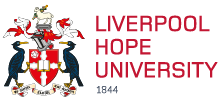Robotics is on the cusp of an exciting new era as robots are becoming more reactive, intelligent and human-like, as well as finding applications in a range of industries including consumer and healthcare robotics. For this reason we have embedded the latest cutting edge technologies in the new Robotics Laboratory. Here, you can experiment and interact with computers running industry-standard and up-to-date specialist software (e.g. Matlab, Visual Studio, 3D Studio Max), Virtual Reality and Augmented Reality interfaces (e.g. Oculus Rift), exotic robots and 3D printing facilities.
Equipment
The Robotics Laboratory includes:
- Embedded systems and physical computing devices (Arduino, Makey Makey) and sensors.
- IEEE 802.15.1 and IEEE 802.11 communication modules
- Wearable & biomedical sensors (including transducers for the monitoring human position, blood pressure, body temperature, breathing, ECG, EMG)
- Brain Computer and Virtual Reality interfaces (Emotiv Helmet, Oculus Rift, Head Mounted Displays, Sony 3D viewer)
- Motion capture systems (Leap Motion, Microsoft Kinect devices)
- Micro & large scale drones
- Haptic device (Novint Falcon, MicroDrives Development Haptics Kit)
- Hewlett Packard DesignJet 3D printer
- An extensive set of software, including Programming Languages like Visual Studio (Microsoft Corp), Matlab (The Mathworks Inc), 3D Studio Max, Processing, Arduino IDE
- Exotic robotic devices
- Kilobot swarm robots
- Nao Aldebaran
- i-Sobot
- FlowCode Robotic Buggies
- Moway Robotic Buggies
- Robo Builder
Expertise
Staff in the Robotics Laboratory bring together inter-disciplinary and multi-disciplinary research interests with substantial experiences in the fields of UAV, Artificial Intelligence, Bio-mimetics, Robotics and Sensors, as well as Computer Science and Informatics. The Laboratory aims to facilitate research endeavour into Intelligent Systems, UAV, Biologically Inspired devices, Drones and Robots.
The Laboratory has been recognised as an established Research Group within the University. Staff have collaborative links with researchers at other national and international universities, companies and research centres.
The underlying philosophy motivating the research of the Laboratory is to apply, besides traditional techniques, novel methods to problems of robot navigation, human robot interaction, sensor perception and integration.
If you would like to read more about our Robotics Lab, please see our Robotics Laboratory Leaflet.
Research Project
- Development of a 3D printed pick and place miniaturized robotic arm.
- Biomedical robotics application for controlling in human-like fashion a robotic hand through EMG signals.
- Enhancing haptic feedback in VR (Virtual Reality) environment through marker less motion capture system.
- Development of a low cost robot for HRI (Human Robot Interaction).
- EEG Based BCI (Brain Computer Interface) Prosthetic Using Motor Imagery.
- Image from a project in collaboration between the University and and Haute Ecole Libre Mosan.
Geography and Environmental Science (GES) Labs
The suite of laboratories is located on the 1st floor in the GES building. GES at Hope is a welcoming and spacious building providing excellent teaching and learning facilities to support students and enhance the learning experience.
There are three laboratories offering a range of equipment and techniques ensuring that when students complete their studies they are fully equipped with up to date knowledge and practical skills in preparation for further study or employment.
Dissertation Research Laboratory
This is a multi-use laboratory equipped with a range of basic and more sophisticated equipment and instrumentation to support students in their learning experience. Students are able to book in to this laboratory to carry out specific investigations related to dissertation and project work using modern equipment and techniques.
This area houses a range of laboratory equipment including:
- Furnaces and ovens - used to determine the total moisture, organic and/or carbonate content of soils and sediments from different environments
- Centrifuges - used in a variety of laboratory procedures including pollen extraction, diatom preparation, cation exchange analysis
- Water quality meters - used for the determination of pH, conductivity and dissolved oxygen
- Photometers - an effective, simple method for determining water quality parameters and are suitable for use across various applications
- Balances - a choice of top pan and analytical balances
- Microscopes - a large number of biological & stereo microscopes for analysis of sediments such as sands, fossils, pollen and microfossils
- Thermoscientific FTIR Nicolet iM10 – for the determination elemental content of a range of solid samples including microplastics
- Benchtop XRF analyser (Niton Instruments) – for elemental analysis of rock and sediment samples
- Magnetic susceptibility meter – determination of magnetic properties of sediment samples enabling identification of long and short term climatic and environmental change
- Thermoscientific UV/ Evolution one spectrophotometer – to measure the absorbance or transmittance of light through a sample, allowing for the quantitative and qualitative analysis of substances, including pollutants in water samples and determining the concentration of substances such as metal ions and phosphates in samples.
Research Preparation Room
This modern, airy laboratory has a variety of uses providing an area dedicated to research for use by staff and students. Technical staff and researchers are able carry out both basic and applied research work and the facility is capable of responding to and adapting to the needs of the department.
A laboratory used to prepare a range of samples and solutions for use in the analysis of and identifying environmental issues related to water, air and environmental degradation.
Equipment used in this lab includes:
- Fume cupboard – To allow safe use of chemicals, be it making up solutions or performing chemical extractions on samples for further analysis
- Furnace - to determine organic and/or carbonate content of soils and sediments from different environments
- Deionise water facility – To provide deionised water for a variety of applications for everyday lab use.
Teaching Laboratory
A large, bright and flexible teaching laboratory fitted with a multi-media audio-visual system. The laboratory has a seating capacity for 30 students and is used primarily for scheduled teaching and practical lab sessions.



